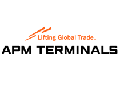Rhine water levels stabilise above crisis levels, problems not over

Water levels on the river Rhine in Germany have risen after weekend rain, remaining well above crisis levels hit earlier in August, but could fall again this week, brokers and commodity traders said on Monday.
Weeks of high temperatures and scant rainfall have drained water in the river, Germany’s commercial artery, causing delays to shipping and pushing freight costs up.
The disruption could knock half a percentage point off economic growth in Europe’s biggest economy this year, say economists.
The reference water level at the choke point of Kaub WL-KAUB near Koblenz was at 1.04 metres on Monday, up 7 centimetres on the day and maintaining recent higher levels after falling to only 32 centimetres earlier in August.
Vessels need about 1.5 metres of Kaub reference waterline to sail fully loaded.
“I do not think we will see a crisis this week but the weather forecast is pretty dry in coming days and water levels are expected to fall again,” one broker said. “Problems with low water are likely to continue into September.”
Shallow water after this summer’s heatwave and drought compelled some freight vessels to sail only about 25% full in August, increasing costs for cargo owners who needed more barges to get supplies delivered.
Spot prices for a liquid tanker barge from Rotterdam to Karlsruhe south of Kaub were unchanged at about 100 euros a tonne on Monday, but down from peaks of around 118 a tonne earlier in August and up from only around 20 euros a tonne in June before water levels fell, brokers said.
The Rhine is a major shipping route for commodities including grains, minerals, coal and oil products including heating oil.
Oil major Shell SHEL.L said on Aug. 18 it had to cut output at its German Rhineland refinery after the Rhine disrupted logistics.
Source: Reuters (Reporting by Michael Hogan, editing by Andrew Cawthorne)

 Hellenic Shipping News Worldwide Hellenic Shipping News Worldwide, Online Daily Newspaper on Hellenic and International Shipping
Hellenic Shipping News Worldwide Hellenic Shipping News Worldwide, Online Daily Newspaper on Hellenic and International Shipping






















 PG-Software
PG-Software